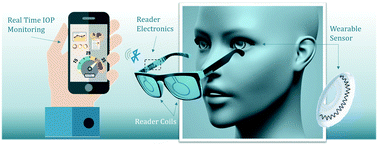Wireless, passive strain sensor in a doughnut-shaped contact lens for continuous non-invasive self-monitoring of intraocular pressure
Abstract
After cataract, glaucoma is the second leading cause of blindness worldwide and real-time monitoring of intraocular pressure (IOP) is of great demand. We present a wireless, passive sensor sitting inside a customized, planar and circular doughnut-shaped contact lens capable of continuous monitoring of the change in the curvature of cornea caused by IOP fluctuations. The sensor consists of a constant capacitor and a variable inductor in the form of a stretchable, closed-loop, serpentine wire that serves as both the sensor and the antenna. Results show a pressure responsivity of 523 kHz per 1% axial strain on a pressurized polydimethylsiloxane membrane and 35.1 kHz per 1 mmHg change in the IOP of a canine eye. The sensor is tested for stability and shows unvaried characteristics after repeated cycles and parasitic movements. Predictable influences of temperature and humidity on the sensor response are also verified experimentally, which can be canceled out using real-time calibration with temperature and humidity sensors to integrate with a reader device. The design reported here has numerous advantages, such as design simplicity, component reliability, high responsivity, and low cost, thereby opening up potential opportunities for the translation of this non-invasive, continuous IOP monitoring technique into clinical applications.



 Please wait while we load your content...
Please wait while we load your content...